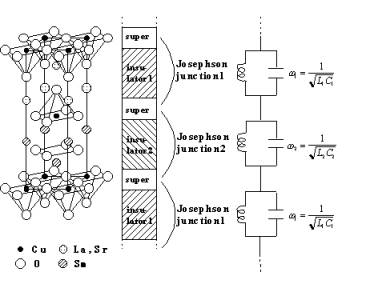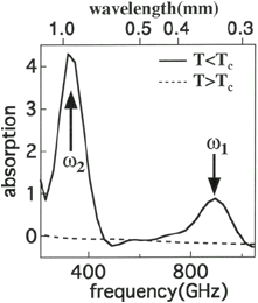Among the various kinds of high-Tc superconductors, there are so-called multilayers which have more than one block layer per unit cell. We have shown that the T*-phase, which is a typical example of multilayers, behaves as the Ā~Ā~Ā~S/I/S/IĀf/S/I/SĀ~Ā~Ā~ (Ā~Ā~Ā~superconductor/ insulator1/superconductor/insulator2/superconductorĀ~Ā~Ā~ )-type Josephson junction array (Fig. 1). This was confirmed by observing the double Josephson plasma resonance, which corresponds to the plasma at the rocksalt-type (La,Sr)2O2 block layer (S/I1/S) junction and the fluorite-type Sm2O2 block layer (S/I2/S) junction (Fig. 2) [1]. A comparison to the results for other high-Tc superconductors revealed that the high-Tc superconductors are related to many types of Josephson junction arrays, such as the Ā~Ā~Ā~superconductor /metal/superconductor Ā~Ā~Ā~ and Ā~Ā~Ā~superconductor/superconductorĀf/superconductorĀ~Ā~Ā~-type junction arrays, by their crystal structures [2]. We obtained these results by using a newly developed measurement method (sphere resonance method), which does not need to use single crystals, and constructing a THz-region (150-600 GHz) measurement system. These results give a new understanding of the electronic state of high-Tc superconductors along the c-axis as well as show the possibility of fabricating new kinds of devices using the intrinsic Josephson effect.
[1] H. Shibata and T. Yamada, Phys. Rev. Lett. 81(1998) 3519.
[2] H. Shibata and A. Matsuda, Phys. Rev. B59(1999) 11672.

